Posts Tagged: spiders
Congrats to UC Davis Doctoral Students Who Study Spiders: AAS Awards
Chances are you're not thinking about spiders right now, but arachnid experts at the University of California, Davis, are. Two doctoral students...
What's for Dinner? How About a Green Bottle Fly?
What's for dinner? A crab spider, camouflaged in our lavender patch, didn't catch a honey bee, a butterfly, an ant or a syrphid fly. No, it nailed...
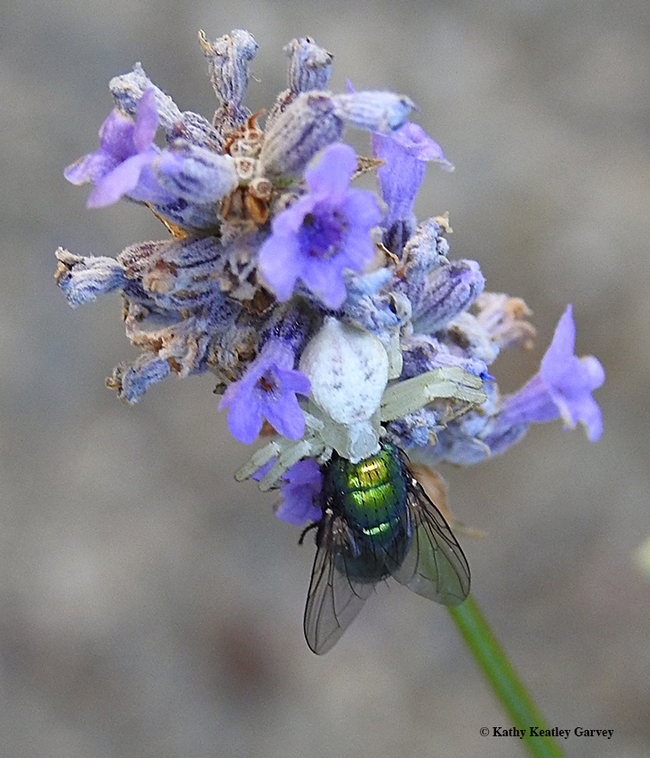
A crab spider dines on a green bottle fly in a lavender patch in Vacaville, Calif. (Photo by Kathy Keatley Garvey)
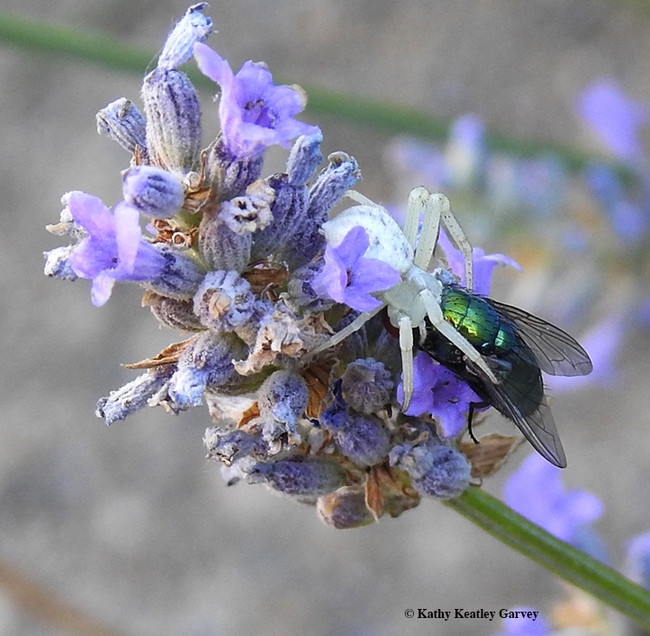
The crab spider is camouflaged, but its prey, a green bottle fly with its familiar metallic blue-green coloring, isn't. (Photo by Kathy Keatley Garvey)
Golden Orbweavers Ignore Biological Rules
Size does matter. Have you ever wondered about sexual size dimorphism in the tropical spiders, the golden orbweavers? The females are sometimes 10...
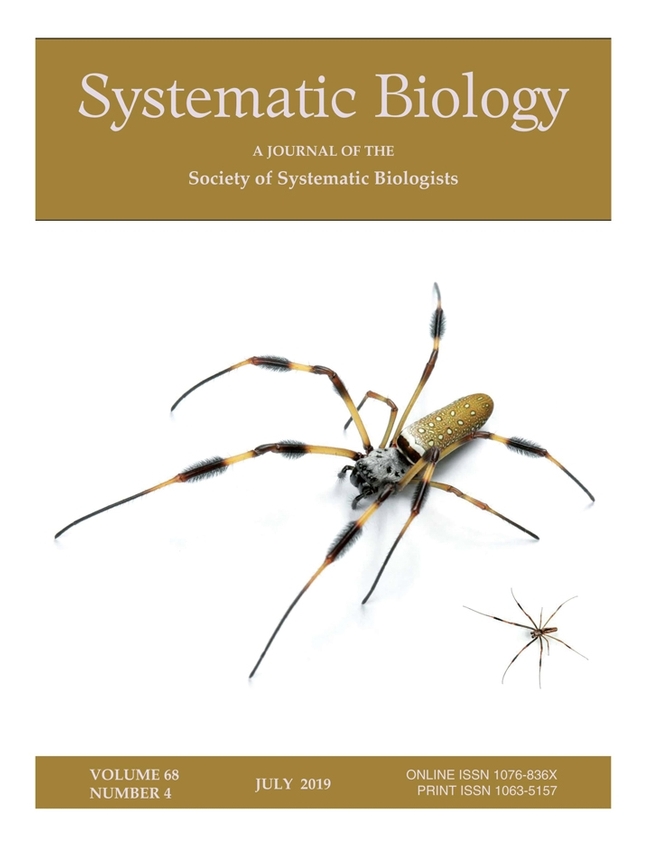
A female Trichonephila clavipes (formerly Nephila clavipes) is a giant compared to her small male (below). The research covers a complex pattern of sexual size dimorphism in this group of spiders, family Nephilidae. (Image copyright by Chris Hamilton, University of Idaho)
UC Davis Chemical Ecologist Walter Leal Says We're Like Bolas Spiders: Here's Why!
UC Davis chemical ecologist Walter Leal characterizes the work in his lab as "like bolas spiders." What are bolas spiders? Well, they're also known...
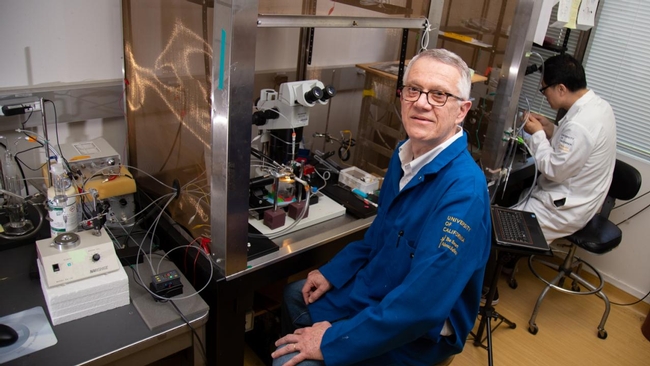
Walter Leal, distinguished professor in the UC Davis Department of Molecular and Cellular Biology, studies the molecular basis of insect olfaction, unraveling how insects detect chemicals and using that knowledge to inform pest management techniques. (Photo by David Slipher, College of Biological Sciences)
Why You Should Love Spiders--Or at Least Like Them!
We recently posted information about the Bohart Museum of Entomology's upcoming open house on "Eight-Legged Wonders," and several people responded...
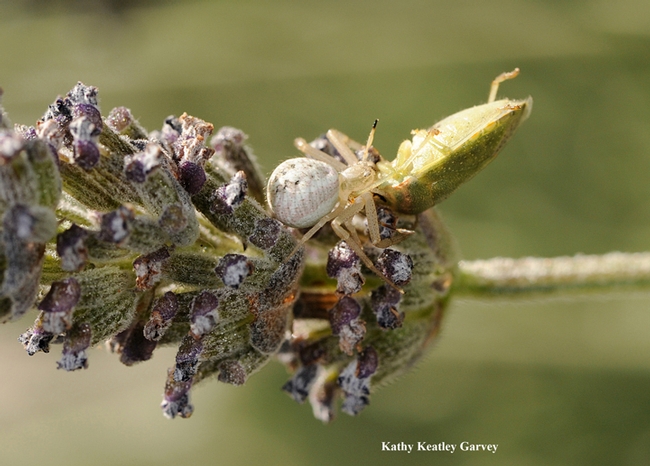
A crab spider dining on a stink bug. (Photo by Kathy Keatley Garvey)
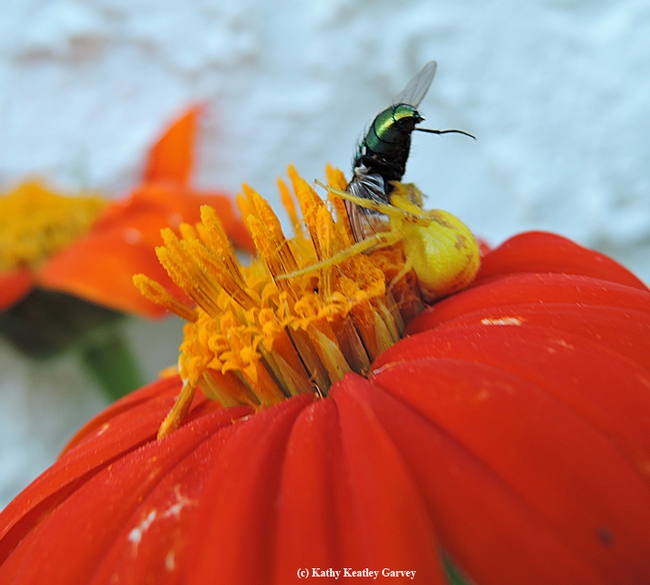
A crab spider has just snared a green bottle fly. (Photo by Kathy Keatley Garvey)
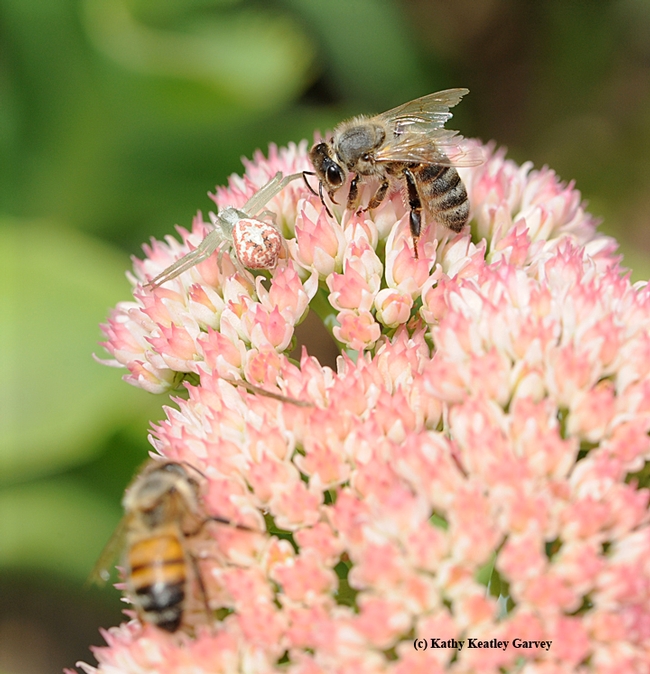
Find the camouflaged crab spider on the sedum. Honey bee, be aware. (Photo by Kathy Keatley Garvey)
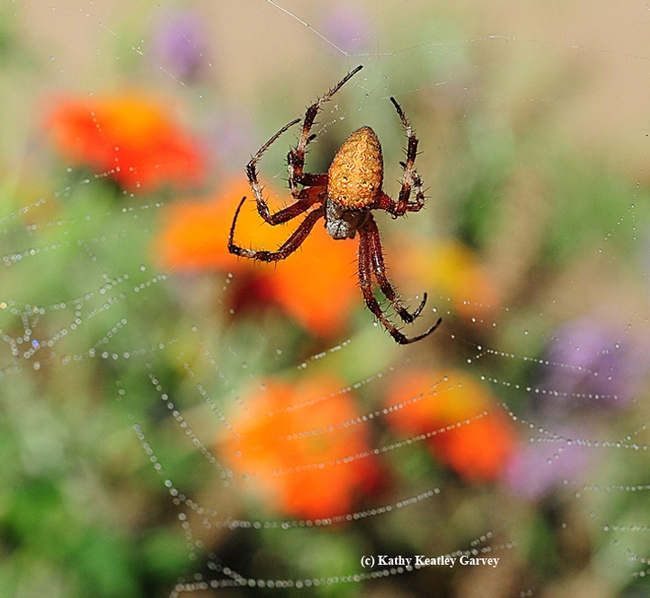
This spider is simply stunning. It's a redfemured spotted orbwever, Neoscona domiciliorum. (Photo by Kathy Keatley Garvey)
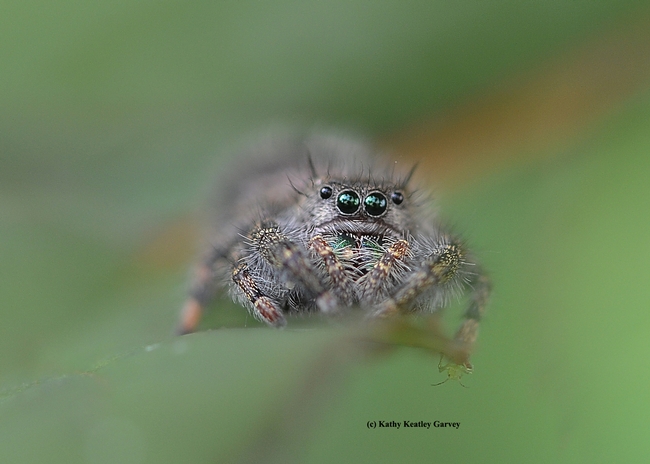
A jumping spider peers at the camera. (Photo by Kathy Keatley Garvey)
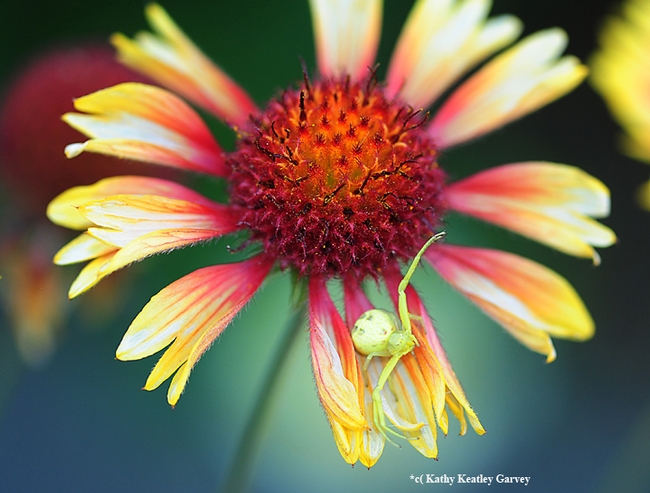
This crab spider, on a blanket flower or Gaillardia, is a camouflaged green. (Photo by Kathy Keatley Garvey)
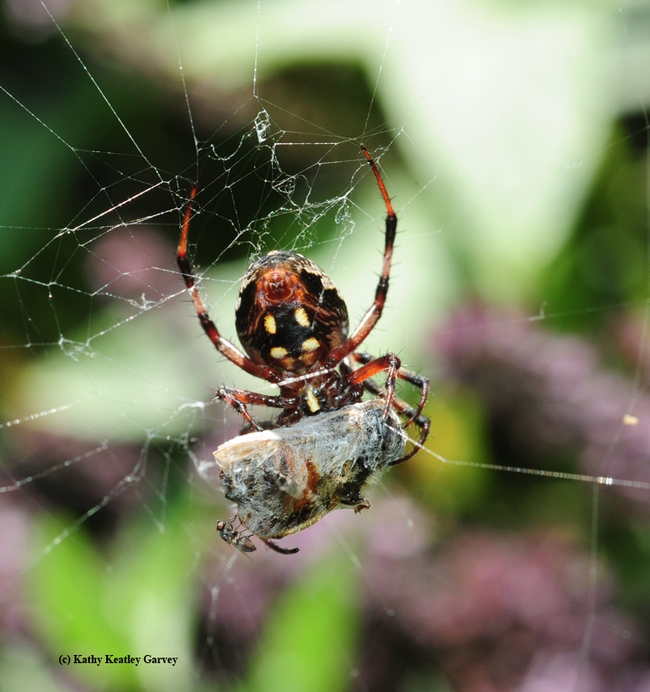
It's a wrap. An orbweaver has wrapped a bee, while a freeloader fly takes a bite. (Photo by Kathy Keatley Garvey)

